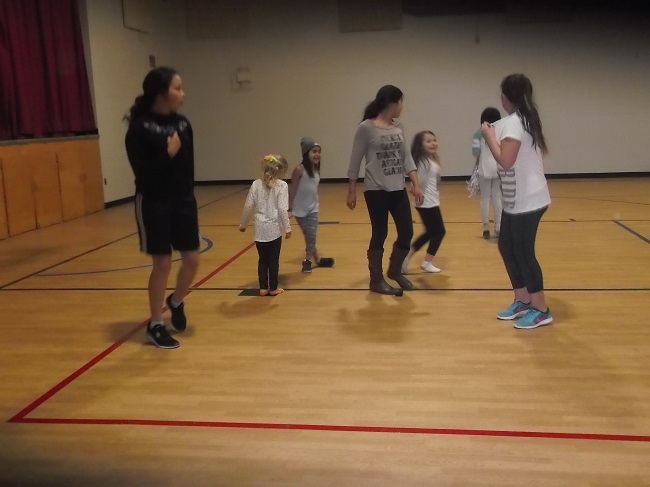Aamjiwnaang Heritage and Culture group bring organized dance to community

By Colin Graf
AAMJIWNAANG FIRST NATION—As the powwow music streams through the speakers, three-and-a-half-year-old Theo Wolfe, dressed in a headdress handmade by his grandmother, follows behind his new dance teacher, Whitelightning Strikes Clark.
Theo keeps the beat quite steadily—at least until he sees his father smiling from the sidelines and runs over for a hug.
This is the scene of Niimedaa–Come Dance with Me, a new event organized by E’Maawizidijig, the Aamjiwnaang Heritage and Culture group, and hosted in the community centre gym. This evening, which consists of two teachers and approximately 10 young dancers with varying dancing experience, is the first step by organizers to bring traditional Indigenous music and dance to a new generation.
Whitelightning Strikes Clark, an experienced powwow dancer who has travelled much of Turtle Island, along with fellow dancer Robbie Williams, were asked to take on teaching duties for just one or two evenings to judge the level of interest in the dance program.
“Aamjiwnaang has been without organized dance teaching for 8 years or longer,” notes Marina Plain, one of the organizers with E’Maawizidijig. “The number of participants is very encouraging.”
Plain hopes to continue the classes weekly or bi-weekly until the summer.
“Not only does the dancing familiarize children with an important part of their heritage,” adds Plain. “But it also encourages fitness.”
While proud parents, aunties, and grandparents sit in the bleachers, Clark says the kids are not there just because the older generation wants them to be.
“A lot of the time, it’s the kids who want to know more about the dancing, even though their parents probably did it when they were little,” states Clark.
“The interest is there, [especially if] they see kids their own age,” believes Clark. “The interest level between girls and boys is about 50/50, but they have different reasons sometimes. Girls like dancing generally ‘because it’s fun’, while boys like it ‘because it’s cool’.”
Some of the Aamjiwnaang dancers performed a demonstration and workshop on Indigenous dance at the children’s fair, Kid Krazy, on April 22, in the village of Point Edward, a suburb of Sarnia, which borders the First Nation lands.


